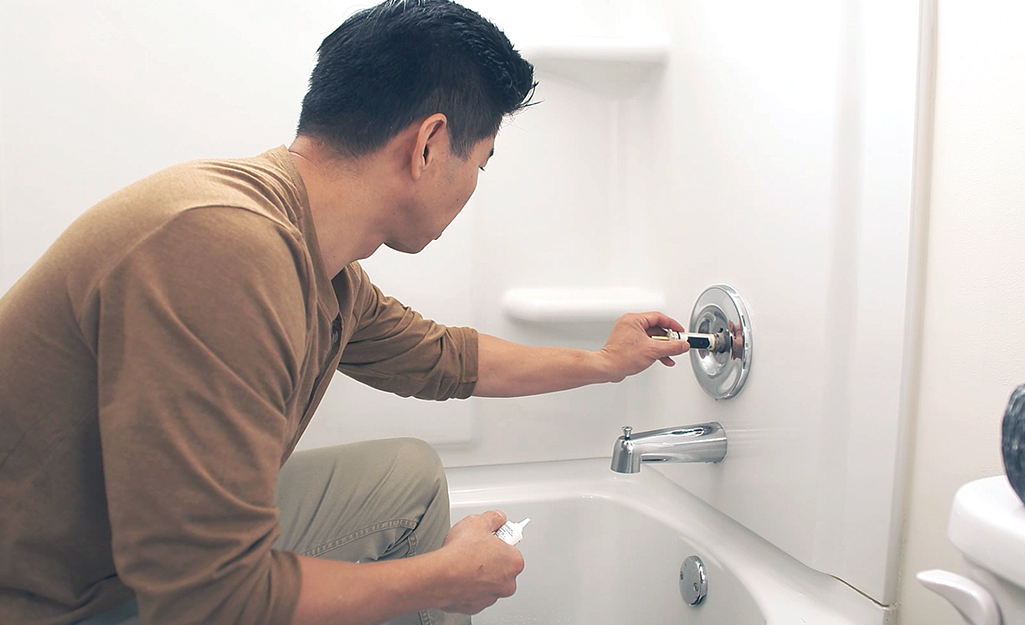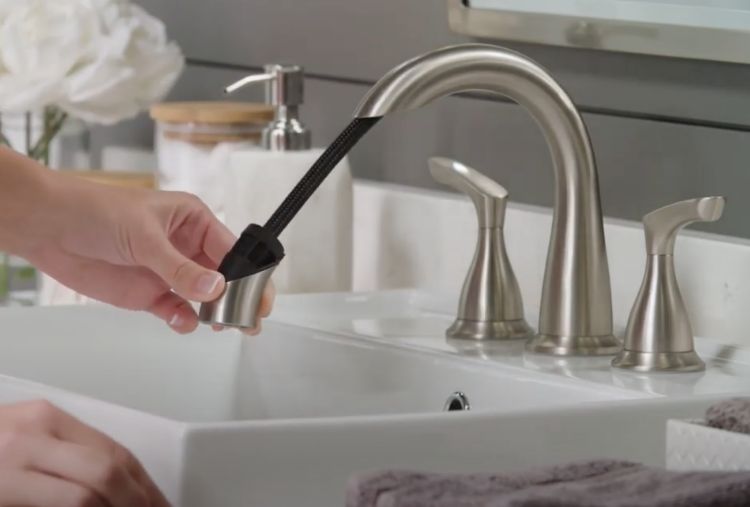How It's Crucial to Correct a Faulty Faucet
How It's Crucial to Correct a Faulty Faucet
Blog Article
Presented here on the next paragraphs you'll find a bunch of good quality answers pertaining to Why It's Important to Fix Leaky Faucets.

Trickling taps could feel like a minor hassle, but their impact surpasses simply the nuisance of the noise. From wasting water to incurring unneeded monetary costs and wellness dangers, ignoring a leaking tap can cause numerous consequences. In this post, we'll delve into why it's essential to resolve this common house problem promptly and effectively.
Waste of Water
Environmental Effect
Dripping faucets add considerably to water waste. According to the Environmental Protection Agency (EPA), a single faucet trickling at one drip per second can waste more than 3,000 gallons of water annually. This not just pressures water sources but also impacts ecological communities and wild animals depending on them.
Step-by-Step Guide to Fixing a Dripping Faucet
Devices Needed
Prior to attempting to repair a leaking faucet, gather the necessary devices, consisting of a flexible wrench, screwdrivers, replacement parts (such as washing machines or cartridges), and plumber's tape.
Typical Faucet Issues and Their Solutions
Recognize the kind of faucet and the specific concern triggering the drip. Common troubles include worn-out washing machines, corroded shutoff seats, or malfunctioning O-rings. Describe producer guidelines or on the internet tutorials for step-by-step support on repairs.
Financial Prices
Increased Water Costs
Beyond the environmental influence, dripping taps can blow up water bills considerably. The built up wastefulness over time equates right into greater energy expenses, which might have been prevented with prompt repairs.
Potential Building Damages
Furthermore, extended trickling can cause harm to components and surfaces surrounding the tap. Water build-up can cause staining, rust, and even structural issues if left unattended, leading to additional repair work costs.
Health Problems
Mold And Mildew and Mildew Growth
The consistent visibility of wetness from a dripping tap produces a suitable environment for mold and mildew and mildew development. These fungi not just jeopardize indoor air high quality but likewise present health threats, particularly for people with respiratory problems or allergic reactions.
Waterborne Illness
Stationary water in dripping faucets can end up being a breeding ground for microorganisms and other virus, boosting the risk of waterborne diseases. Impurities such as Legionella microorganisms prosper in stationary water, potentially leading to serious ailments when consumed or inhaled.
Do it yourself vs. Expert Repair work
Advantages and disadvantages of DIY Repair Service
While some may try to take care of a dripping tap themselves, DIY fixings include their very own set of obstacles. Without proper expertise and tools, DIY efforts can exacerbate the problem or bring about incomplete repair services, lengthening the problem.
Benefits of Working With a Professional Plumber
Working with a specialist plumber guarantees that the underlying source of the trickling faucet is dealt with successfully. Plumbing technicians possess the competence and tools to identify and fix tap concerns successfully, conserving time and minimizing the danger of more damages.
Ecological Duty
Specific Payment to Preservation
Taking obligation for taking care of leaking taps aligns with wider efforts toward water preservation and environmental sustainability. Every individual's activities jointly make a substantial influence on preserving priceless sources.
Lasting Living Practices
By focusing on timely repairs and taking on water-saving behaviors, people add to lasting living methods that profit both existing and future generations.
Safety nets
Routine Upkeep Tips
To stop leaking taps, carry out regular upkeep such as cleaning up aerators, inspecting for leaks, and changing damaged components without delay. Additionally, think about mounting water-saving tools or upgrading to extra efficient fixtures.
Significance of Prompt Repair Works
Resolving trickling taps as quickly as they're seen stops more water waste and prospective damages, inevitably conserving both water and cash in the future.
Influence On Home Value
Understanding of Well-Maintained Residential Property
Preserving a property in good condition, including resolving upkeep problems like leaking faucets, boosts its regarded worth and value among possible purchasers or renters.
Influence on Resale Worth
Qualities with well-kept plumbing components, including taps, command higher resale worths in the realty market. Addressing trickling faucets can add to a positive perception during property assessments and negotiations.
Final thought
Resolving a leaking tap goes beyond simple ease; it's an important step towards preserving water, decreasing monetary prices, and safeguarding health and wellness and residential property. Whether with do it yourself fixings or specialist assistance, taking action to repair leaking faucets is a little yet impactful way to promote accountable stewardship of resources and add to a healthier, more sustainable future.
How to Fix a Dripping or Leaky Faucet
A leaking faucet is one of the most common problems that homeowners encounter, but it being commonplace doesn’t make it any less annoying. The constant drip drip drip of a leaking bathtub faucet, showerhead, or sink tap can disturb your home’s serenity. Left neglected, a dripping faucet can also result in higher water bills and discoloration or mold growth in your sink or plumbing fixtures.
Fortunately, you don’t have to be a trained plumber to know how to stop a dripping faucet. With some basic tools, replacement parts, and a little patience, leaky faucet repair is a breeze. In this article, we’ll explain what causes dripping faucets and how you can fix them.
What Causes a Leaking Faucet?
Kitchen and bathroom faucets come in all manner of designs, but most involve some combination of valves, O-rings, seals, and washers. The O-ring is usually the weakest link, but any one of these pieces can wear down over time. Heat, moisture, temperature fluctuations, minerals, mold, and movement can contribute to warping and corrosion, breaking the watertight seal. This just comes with the territory of being a homeowner. Everything is always subject to wear and tear, and some component parts of your appliances and fixtures need to be replaced on occasion. At least replacement O-rings are cheap!
More rarely, dripping faucets can be a symptom of excessively high water pressure. Were this the case in your home, you would probably notice that the leak is not isolated to one faucet. Water pressure issues are harder to resolve on your own. We recommend contacting a professional plumber if you suspect your water pressure is too high.
How to Fix a Dripping Faucet
Pipe wrench or monkey wrench Allen wrench set Screwdrivers Old towel or rag Shut off the water.
Before you do anything, you need to turn off the water to keep from drenching your kitchen or bathroom. You should find a valve under the sink and against the wall. Once you’ve turned this valve, try turning the faucet on to confirm that the water source has been cut off.
If you can’t locate your local valve for the faucet you’re working on, you can always shut off the water to the house at the main valve. Of course, this will prohibit anyone from using the sinks, showers, or toilets while you’re working on the faucet that’s giving you trouble.
Plug or block the drain.
You’ll be disassembling the faucet and removing some small bits of hardware. Plug the drain with a stopper or rag to avoid the possibility of a small screw falling into your P-trap.
Take apart the faucet assembly.
There are several varieties of kitchen and bathroom faucets, each with its own manner of assembly. For detailed instructions on how to disassemble your faucet, you can refer to the fixture’s manual or contact the manufacturer. If you know whether you have a ball, disc, cartridge, or compression faucet, you can find detailed schematics online.
In general, you need to begin by removing the faucet handles. You might notice a small screw that you’ll need to remove with a screwdriver or Allen wrench. If you don’t see any visible securing hardware, it’s likely hidden under a decorative cap that can be unscrewed or popped off with flathead screwdriver.
Remove each piece methodically, consulting a schematic when necessary. Take notes or arrange the pieces in such a way to make it easier to correctly reassemble the faucet later.
Remove the cartridge.
Once you’ve removed the handles and securing hardware, you should be able to remove the valve cartridge or stem. Some cartridges will slide right out. Other faucet models will require you to loosen a nut with a pipe wrench before you can remove the valve stem.
Examine the exposed hardware.
With the cartridge or stem removed, inspect the component parts. Check the rubber O-rings for wear and tear. Also examine the seat washer for corrosion or other damage. These pieces are usually the responsible parties for a dripping faucet, but it’s worth inspecting the other component parts while you have the faucet disassembled.
Find replacement parts.
Once you’ve identified which faucet component has failed, find an identical replacement. Your local hardware store should have O-rings, seat washers, and other standard components in stock. If you have a luxury or uncommon faucet, you may have to contact the manufacturer for a replacement part.
It’s a good idea to take your old parts with you to the hardware store so you can compare them with the store’s inventory and be sure you’re purchasing the correct replacement.
Reassemble the faucet.
With your new parts in hand, reconstruct the faucet and handles. Don’t be tempted to overtighten screws or nuts. You might think this could create a better seal, but it can instead damage or bend a delicate part of the assembly and create a new problem for you.
Turn on the water and test the faucet.
The only thing left to do is test your work. Unplug the sink, turn the water back on, and try the faucet. Congratulate yourself on a job well done!
https://www.libertyhomeguard.com/how-to-fix-a-dripping-or-leaky-faucet/

I was made aware of that editorial about Why Are My Faucets Dripping (And Can I Fix It Myself)? from a pal on a different web property. I beg you take the time to share this blog post if you enjoyed reading it. Thank you for your time. Come back soon.
Report this page